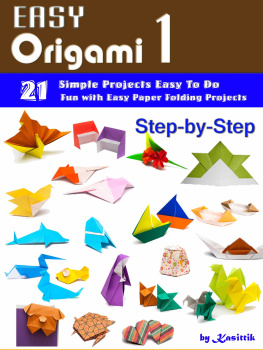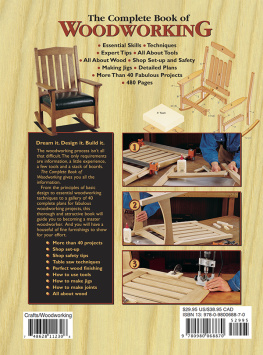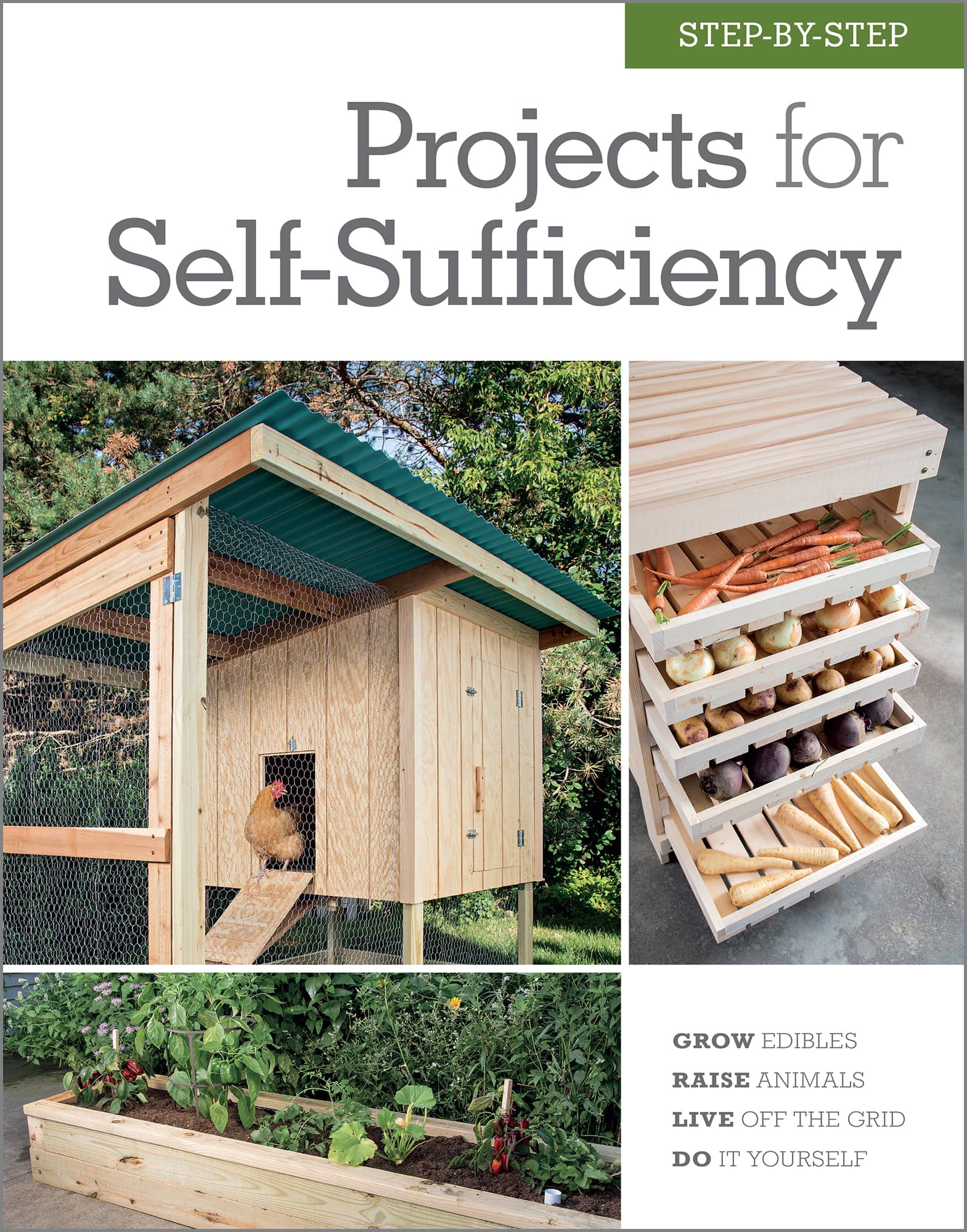STEP-BY-STEP
Projects for
Self-Sufficiency


2017 Quarto Publishing Group USA Inc.
First published in 2017 by Cool Springs Press, an imprint of Quarto Publishing Group USA Inc., 400 First Avenue North, Suite 400, Minneapolis, MN 55401 USA.
Telephone: (612) 344-8100 Fax: (612) 344-8692
quartoknows.com
Visit our blogs at quartoknows.com
All rights reserved. No part of this book may be reproduced in any form without written permission of the copyright owners. All images in this book have been reproduced with the knowledge and prior consent of the artists concerned, and no responsibility is accepted by producer, publisher, or printer for any infringement of copyright or otherwise, arising from the contents of this publication. Every effort has been made to ensure that credits accurately comply with information supplied. We apologize for any inaccuracies that may have occurred and will resolve inaccurate or missing information in a subsequent reprinting of the book.
Cool Springs Press titles are also available at discounts in bulk quantity for industrial or sales-promotional use. For details contact the Special Sales Manager at Quarto Publishing Group USA Inc., 400 First Avenue North, Suite 400, Minneapolis, MN 55401 USA.
Digital edition: 978-0-76035-755-2
Softcover edition: 978-1-59186-688-6
Library of Congress Cataloging-in-Publication Data
Names: Cool Springs Press, issuing body.
Title: Step-by-step projects for self-sufficiency : grow edibles, raise animals, live off the grid, DIY.
Description: Minneapolis, MN : Cool Springs Press, 2017. | Includes index.
Identifiers: LCCN 2016045690 | ISBN 9781591866886 (hc)
Subjects: LCSH: Agriculture--Handbooks, manuals, etc. | Self-reliant living--Handbooks, manuals, etc.
Classification: LCC S496 .S747 2017 | DDC 635--dc23
LC record available at https://lccn.loc.gov/2016045690
Acquiring Editor: Mark Johanson
Project Manager: Alyssa Bluhm
Art Director: Cindy Samargia Laun
Cover Designer: Simon Larkin
Layout: Simon Larkin
Edition Editor: Eric Smith
Photographer: Tracy Walsh
Photo Assistance: Ian Miller, Susan Storck
Illustrator: Christopher R. Mills Illustration (pages )

INTRODUCTION
building a self-sufficient life
Living a more independent lifestyle is a rewarding goal. By learning to do more things yourself, you gain control of the how and when and what of modern life.
The projects in this book are designed to help you reach the goal of self-sufficient living. The best part is that you dont need to sell your townhome and move to 80 acres in the mountains to make use of these projects. Pick off a few here and there, and you can participate in the self-sufficient way of being without making the sacrifices required when living off the grid.
Building a greenhouse is a great way for gardeners to jumpstart the growing season, or to introduce new, sensitive plants to your garden. See .
The homestead may look very different today than in the pioneer days. But what we may lack in acreage, we can compensate for with creativity. Growing edibles in containers on a balcony is just one way to pursue your self-sufficient goals in an urban setting.
Home arts like weaving may seem obsolete, but participation in them is growing. If you really want to let your self-sufficiency flag fly, dont just learn to weave: build your own frame loom (see ).
Hard or soft , apple or pear, homemade cider is pure goodness. But you just cant make it efficiently without a cider press. See for an easy, DIY press you can make.
Why aspire to self-sufficiency? Because the pace of modern life can be overwhelming. All too often, the amazing technology that was supposed to free us and make life better and better instead becomes a drain on our money, time, and joy. As weve tried to improve our lives through progress and efficiency, we have ironically moved further and further from many of the things that make life healthy, rewarding, and fulfilling. Its just a matter of cause and effect. Medical advances that allow for gene therapy are used to create GMO foods of unproven safety. An ever-ready energy supply has ensured that our lives are more comfortable and convenient than ever before; but our environment pays for that convenience in the fallout from fracking, the pollution of coal-fired power plants, and the occasional devastating oil spill. All the while, modern life seems to demand that we move faster, do more, make more, and consume more. Along the way, weve become less able to do for ourselves, and more in the habit of buying everything we need regardless of the environmental and personal consequences.
And make no mistake, there are consequences. As we continue to fill landfills at an alarming rate, see our water tables and well water increasingly become contaminated, and learn more about how corporate farming is creating a less diverse food-supply chain, the global and environmental benefits of whats come to be known as self-sufficient living become more relevant and more apparent. By saving water, raising food that doesnt involve long-distance transport (and all the fuel and pollution that transportation entails), and finding new ways to create what we need using only the energy in our bodies, were not only helping ourselves, were helping the world.
Those upsides are attracting growing numbers of people to the self-sufficient lifestyle. The fact that youre reading this book means that, chances are, youre one of those people.
Slowly but surely, were learning that quantity, speed, and convenience are not always equal to quality, wholesomeness, and satisfaction. People across the country are realizing that highly processed food, produced and packaged on an industrial level, is often not as truly good tasting or as good for you as simpler food grown in your own backyard. People are reconnecting with animal husbandry, from raising two or three chickens to a small herd of goats. They are finding the pleasure in working with living things that create resources, such as food and fertilizer, and rediscovering the simple joy of hand-woven textiles made on a loom they built themselves. They are realizing that there is a way to live that is gentler on the ecosystems of which we are so much a part. On a more pragmatic level, they are saving money with what they grow and produce and what they no longer need to buy.













